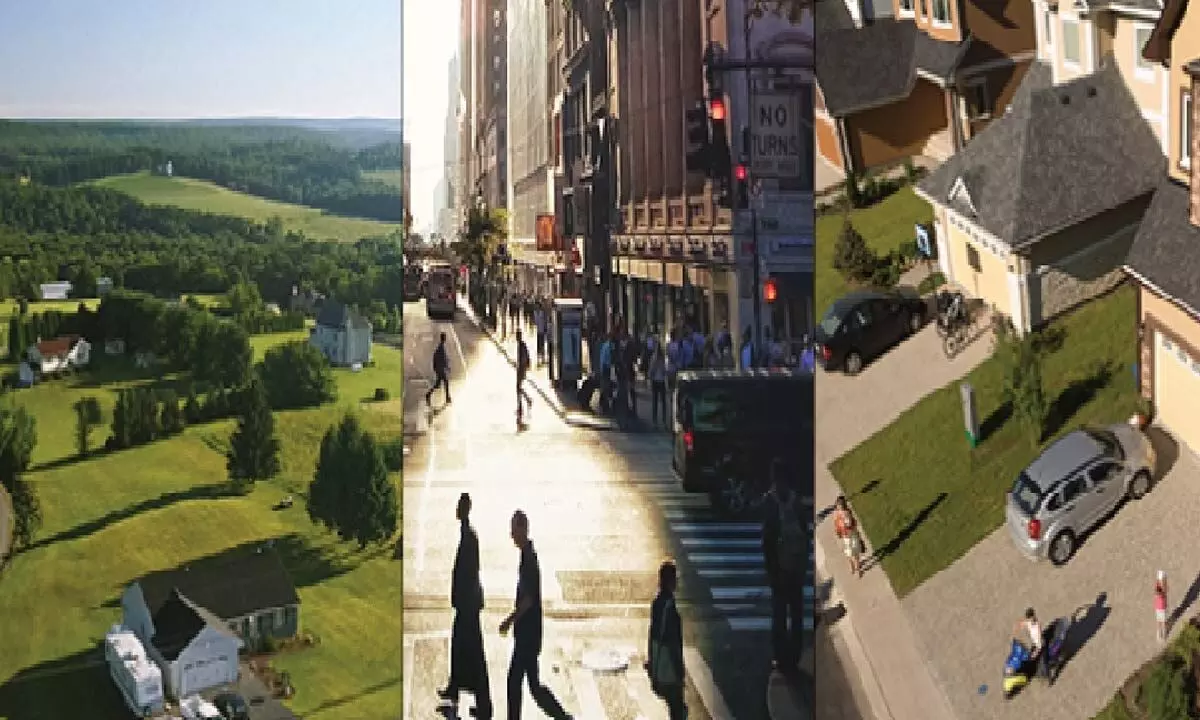A rebalancing between city, suburbs and countryside

There’s no doubt that today we’re in the grip of a remarkable and unprecedented societal shift that is radically changing the geography of work.
There’s no doubt that today we’re in the grip of a remarkable and unprecedented societal shift that is radically changing the geography of work. A shift that, by enabling people to choose to work in the way they want, is overwhelmingly positive. It’s a subject that’s close to my heart.
By Mark Dixon, Founder and CEO, IWG plc, saya, “The rise of hybrid working for more than two decades now – a phenomenon enabled by the liberating effects of technology, cutting the ties that used to restrict people across the world to a single (and usually city centre-based) workplace and instead, empowering them to work in the heart of their local community. As a result, the demand for co-working and office locations across the suburbs, small towns, and countryside has risen exponentially across all global markets.”
For generations, the city has been at the epicentre of people’s lives. Its pull has emptied communities of their most economically active talent. Commuter-belt towns and parts of cities have become barren during daylight hours, solely serving as work destinations. Perhaps above all, the city-as-workplace has exposed millions of people to the destructive daily commute. Little has done more to add to human misery than this horror, brought about in the 19th and 20th centuries by business bosses’ determination to keep their people under their eye – and under their control.
However, thanks to the recent conjunction of digitalisation, environmental awareness and Covid-19, things are changing fast. And research, from Arup illustrates the sheer pace at which the transformation is happening. First, people are leaving cities. Since 2020, outbound migration from major U.S. cities to smaller communities has increased by a staggering 59%. And now, close to half a million further city-dwellers in the U.S. are projected to leave urban areas for the suburbs, smaller cities, and rural regions, most of them in search of larger homes and a better work/life balance – and this is a trend we are witnessing globally. It’s not just about where people want to have their homes. It’s also about where they want to spend their time and money. UK mobile phone data tells us that footfall in small towns, suburbs and seaside communities has risen by a full 50% since 2019.
The impact of that 50% rise in footfall, creating new opportunities for many communities, is clearly reflected the research by Arup. It reveals how the resulting higher levels of economic activity in suburbs and small communities are breathing much-needed financial vitality into areas.
And it aligns with the findings of another research study from 2021, which measured the positive economic impact to be gained from the rebalancing of where work takes place. This found that rural and suburban economies could generate annual increases in local consumer spending of $1.3 billion in the U.S. and £327 million in the UK as a result of the growth of hybrid working.
Today, almost half (48%) of workers in the UK and 40% of those in the U.S. are already working and 70% of organisations in India are looking at hybrid work models and it’s continuing grow in popularity.
City authorities can seize the opportunity that hybrid working offers by promoting investment in flexible workspaces near local communities and leveraging their central position to become vibrant hubs for decision-making, social interaction, entertainment, and tourism. Daily commuting to city centre offices has the biggest carbon footprint of any way of working. So, it resonated strongly when Future Earth’s Global Carbon Project reported a 2.4 billion-tonne fall in fossil CO2 emissions during the 2020 lockdowns, with the largest proportion coming from reduced transport emissions.
In India too, this trend has been seen replicated by IT and tech talent opting to move back to regional towns. Consequently, many leading IT companies have gone on to open new centers in India’s smaller regional cities. These centers are seeing the biggest influx of remote workers in India. Cities like Coimbatore, Bhubaneswar, and Mysore are known for their low cost of living and high quality of life. Chandigarh and Kochi are also some of the cities that have seen an influx of workers coming back from large metros.
The rise of remote work has opened a world of possibilities for young professionals, giving them the freedom to live and work in the city that best suits their individual needs and preferences. And for small cities that can offer the right combination of factors, this shift in the workforce could be a game-changer, bringing new energy, talent, and economic growth to their communities.
Previous research from Arup has shown that a permanent shift towards hybrid working in the heart of local communities would drive carbon reductions of up to 87% in the U.S. and 70% in the UK. In the India context as well, hybrid working can play a major role in achieving ESG goals, and companies can support six of the United Nations’ 17 Sustainable Development Goals for 2030 simply by adopting the hybrid model of working. Reducing employee commuting is the most effective way to reduce their environmental impact. And with staff working partly from home or close to home, firms can downsize their office headquarters, with a consequent reduction in energy use.
Domestic migration to smaller cities and rural areas continues to accelerate ahead of pre-pandemic levels. That’s why clear-sighted policymakers, planners and businesses are embracing its benefits in their droves. And it’s essential for all of us and our planet that these visionaries convince their peers to listen.














